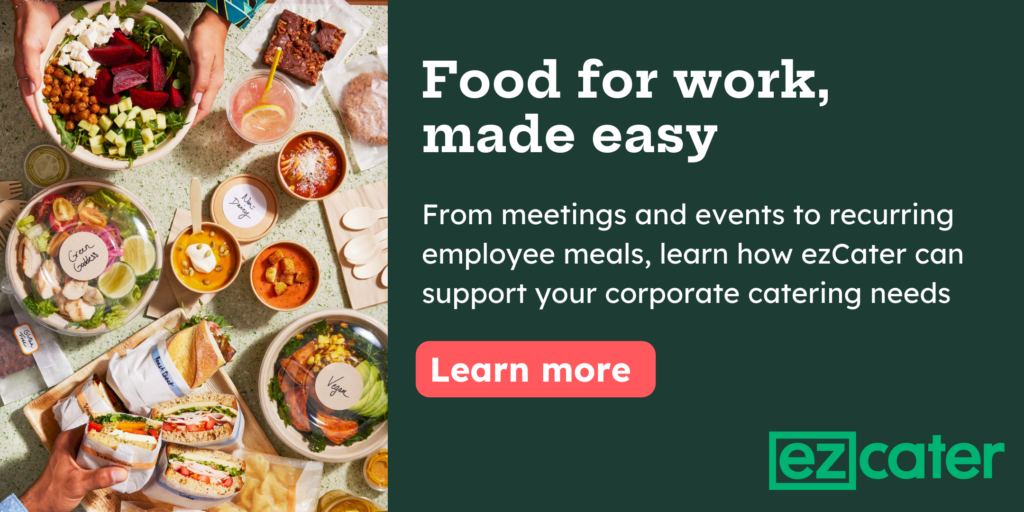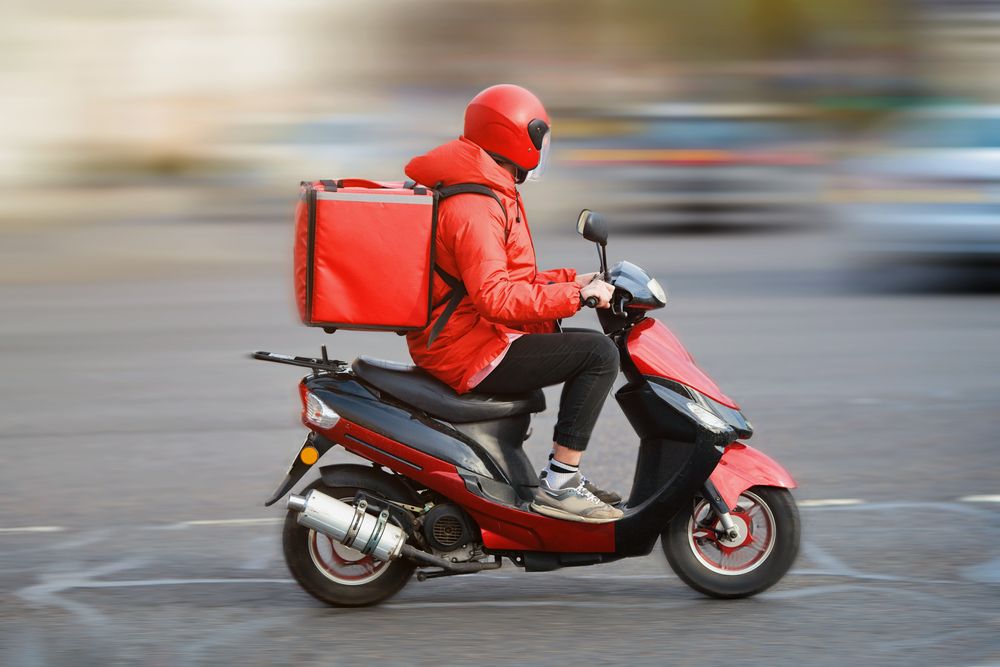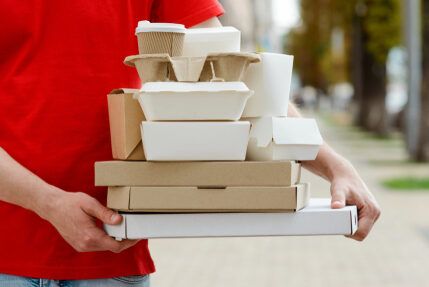You can admit it: You get excited when you know there’s a piping hot, delicious food delivery on its way to you (we do, too!). And when your order arrives without a hitch, you’ll want to show your appreciation to the hard working delivery driver in the form of a generous tip.
But how much should you give? And should the calculation be different if you’re receiving a huge catering order for your office versus a personal lunch order? And what’s up with that delivery fee?
Because food for work tends to be more expensive, sometimes as high as $500 or more, the 20% tip you’d typically leave at a restaurant is, let’s just say… really generous. But at the same time, drivers work hard and rely on tips, so you want to be sure you’re giving enough to cover their time and recognize their effort.
Lucky for you, we’ve put together a quick guide on tipping catering delivery drivers.
Why caterer delivery tips are different
To figure out how much to tip a delivery driver, the first thing to think about is the type of delivery. Ordering a pizza or a couple of sandwiches is a lot different than ordering large trays of food for a lunch meeting. The main reason has to do with the size – and the price – of the order.
Considering that 64% of Americans say they tip based on the percentage of the food versus a flat amount, that could mean tipping for a large group order can get very expensive, while drivers bringing smaller orders only end up with a couple of bucks.

Think about it: A 20% tip on a $500 order means the delivery driver gets $100, while that same 20% applied to a $15 order is just $3. Besides physically carrying in a larger order, do you think there is a $97 difference in value between the service that each of those two drivers provided? Probably not.
That’s why figuring out how much to tip a delivery driver isn’t always as simple as picking a percentage and applying it across the board.
So the big question: how much should you tip a delivery driver?
If you were to poll an average group of people about their tipping habits, you might get a large range of responses. In one Reddit discussion, for example, opinions range from 10% to 20% of the bill, with some folks saying it depends on how far away the catering company is.
The Emily Post Institute recommends that all food delivery people be tipped 10% to 15% of the bill regardless of other factors.
Here’s what ezCater Says
Our recommended tip range for catering delivery drivers, as featured in our FAQs, is:
- 10% for large orders (over $100)
- 15% for smaller orders
- A $5 minimum for all deliveries
Using the same scenario above, the driver with the $500 catering order would now get $50, while the $15 lunch order driver would get $5. While there is still a $45 difference between the two, that’s OK, because it recognizes that transporting the larger order requires more time, probably multiple trips back and forth to the vehicle, and likely some heavy lifting.
Of course, the recommendations above are just a starting point. Feel free to bump up your tip amount if the caterer or restaurant is coming from further away, if the weather is treacherous, if you’re getting a delivery outside of normal business hours, or if the delivery driver goes above and beyond in some way.

Tipping tip: The average ezCater customer tips 12%, meaning most people are doing it right!
Difference between delivery fee and tip
So now that you have a rough guide on how to tip your catering delivery person, what happens if you see that a delivery fee has already been added to the bill? Many caterers and restaurants do indeed charge a delivery fee – and some customers mistakenly think it’s the same thing as the tip.
Because of that misconception, some drivers are being deprived of their hard-earned delivery tips.
What’s the delivery fee, and who gets it?
Delivery fees do not compensate the driver directly. Instead, they are typically used to cover the cost of gas, insurance, parking tickets, and other company expenses related to transporting your food.
Some platforms (or restaurants that want to offset the cost of being on a platform) may also add on a service fee as a separate charge, but again, that doesn’t go to the driver.
In other words, when you see a delivery fee or a service fee, you should know that the delivery person doesn’t get one cent of it.
As for what fees you can expect, it varies widely (anywhere from 5% to 15% of your bill total, or a flat rate), but it’s usually based on the size of the order, the travel distance for your order, and other factors determined by the restaurant or caterer.
For drivers, it’s all about the tips
When deciding on a tip for delivery drivers, one thing to realize is that they rely on customers’ generosity to earn a decent living since they often make lower hourly wages than other types of professions. One study of New York City app-based delivery workers found that workers earned an average of $7.87 an hour before tips.
And when you’re tipping catering delivery people, don’t forget that they are transporting and carrying heavy boxes and trays in all kinds of weather, navigating traffic and parking, and sometimes even having to climb flights of stairs to get your food to you. In some cases, they are also taking the time to set up your spread, too, so it’s ready to serve.
A tipping tip: Some larger catering services may automatically include gratuity in your total bill, so be sure to check (or ask).
Should you tip drop-off catering delivery drivers?

The level of set up that a catering delivery person offers really depends on which restaurant or caterer you order from, and the type of food. Some may be setting up food on sternos to keep trays warm, while other types of orders like sandwich trays or individually wrapped items might be drop-off catering. Drivers who delivered catering during the height of the COVID-19 epidemic primarily did drop-off catering, and customers often tipped the same as if they’d set up traditional catering meals.
While you can certainly choose to make your caterer tip a little more generously if they are setting up for you, the bottom line is that all types of catering deliveries require a tip.
Tipping tip: If more than one catering staff member helps set-up a larger event, tip to the lead member so they can distribute tips to the individual workers appropriately.
Keeping your work team well fed with fresh food starts with developing good relationships with the delivery drivers on the frontline. They are the ones who are taking extra care and fighting through traffic to make sure your food arrives on time and ready to enjoy. Following the tipping guidelines above will ensure that you are rewarding them appropriately for their excellent, professional service.

For more information on planning the perfect office catering order








